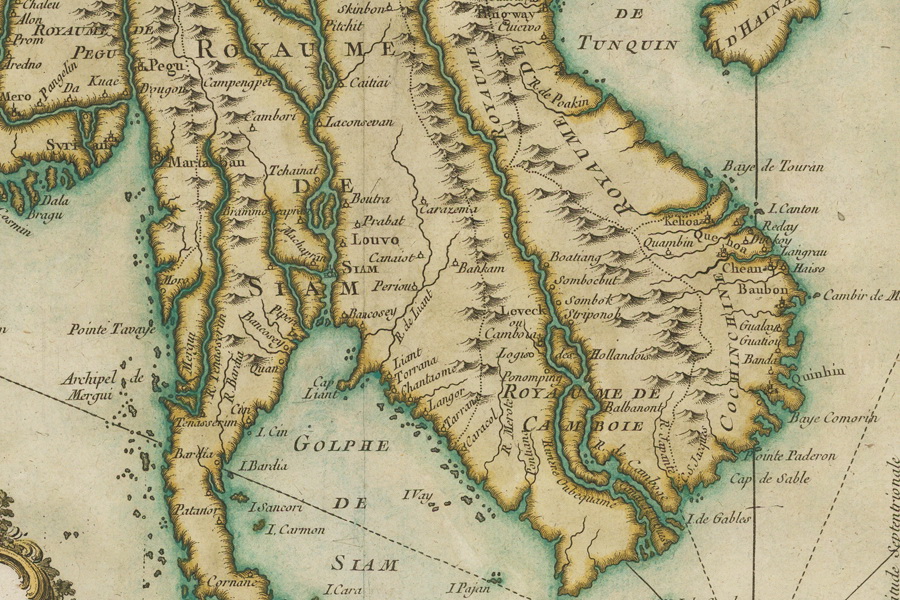
In June 1866, six Frenchmen departed from Ho Chi Minh City on a dangerous mission up the mighty Mekong River. Travelling in two “minuscule steam-driven gunboats” along with an “inordinate quantity of liquor, flour, guns and trade goods,” as the historian John Keay put it, the Mekong Exploration Commission cast off from the waterfront and steamed off into the wilds of Indochina. The expedition, led by Captain Ernest Doudart de Lagrée, was tasked with finding a navigable trade route up the Mekong. This, it was hoped, would link the new French colony of Cochinchina to China, giving traders access to the untold bounties of the Qing dynasty.
French officials saw this “river road” as a vital means of checking the advance of the British, who had recently seized Lower Myanmar. Admiral Paul Reveillere, one of the mission’s great proponents in Paris, described it loftily as “a task worthy of raising the passions of our century, with its love for great undertakings.”
Despite such encomiums, the expedition quickly encountered disappointment. It traversed nearly 9,000km, hastening the extension of French colonial rule over modern-day Vietnam, Cambodia and Laos, but significant stretches of the Mekong proved impassable to commercial steamships. The mission’s deputy, Francis Garnier, who took over command from Lagrée after the captain succumbed to amoebic dysentery, wrote frustratedly of a river that “would simply not cooperate.”
A century and a half on, the French dream of a “back door to China” has been achieved, albeit not as romantically as first envisioned. Under the aegis of the Asian Development Bank’s Greater Mekong Subregion program, the past decade has seen the construction of an ambitious road network linking China with its southern neighbors. By revitalizing the old caravan routes that once snaked southward from Yunnan, these highways have largely achieved what the French intended, only in reverse: Instead of being the world’s back door to China, this new transport network has become China’s back door to the world.
Technical Muscle
As a result of this economic integration, large swathes of Southeast Asia are now economically oriented northward, rather than toward the oceans and port cities to the south. Across northern Myanmar, from Lashio to Kyaing Tong, shops are packed with Chinese goods. Since the completion in December 2013 of the Kunming-Bangkok Expressway, linking China and Thailand via northern Laos, Chinese cars have created traffic snarls on the streets of Chiang Rai.
The Chinese orientation is especially noticeable in landlocked Laos. For years an isolated backwater, the country has in a single decade become a primary conduit for the Chinese penetration of Southeast Asia. During a recent trip through the north of the country, I saw Chinese communities in just about every town I visited — small parcels of Yunnan transplanted into the tropical hills.
In Luang Prabang, the picturesque former royal capital, hotel signs and menus have been translated into Mandarin to accommodate what one travel agent referred to as a “boom” in Chinese tourists. By some counts, the country is now home to more than 300,000 Chinese migrants — many of them recent arrivals. “China is very close,” a Taiwanese taxi driver named Huang Zhitang told me in Vientiane. “They come here very easily.”
This road network could soon be exceeded by a project that Garnier and Lagrée could barely have imagined: a new $7 billion high-speed railway linking Kunming and Vientiane. Where the French encountered mountains and rivers that refused to “cooperate,” Chinese technical muscle is simply punching its way through 420km of rugged terrain, waving aside every objection from nature and geography. Once the project is finished, China’s integration with Southeast Asia will be complete — it will be possible to travel almost nonstop by train from Beijing to Singapore.
The new “back door” to China is an example of how gleaming new infrastructure can fast-track the goals that 19th century explorers sought to achieve through grueling feats of exploration and colonial derring-do.
The impact on Southeast Asia is likely to be momentous. For countries like Laos, isolated for so long by its rugged terrain, the opportunities brought by an influx of Chinese money will sit in precarious balance with fears that the country might become the doorstep to a new Chinese empire — an outlying province of a new “Greater Yunnan.” As the French experience showed, it is only a matter of time before economic projects become political ones, too.
Published by the Nikkei Asian Review, April 21, 2016



